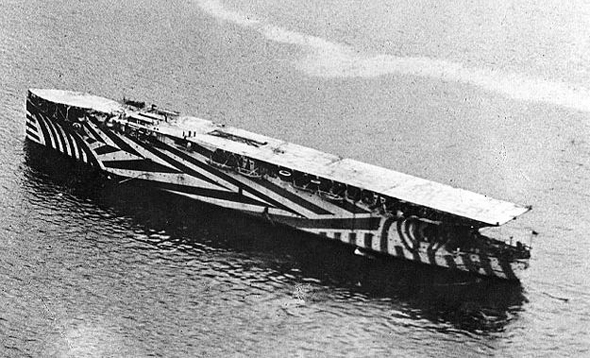Predators might not be dazzled by stripes

New research using computer games suggests that stripes might not offer the ‘motion dazzle’ protection thought to have evolved in animals such as Zebra and consequently inspired ship camouflage during both World Wars.
Motion may just be one aspect in a larger picture. Different orientations of stripe patterning may have evolved for different purposes
Anna Hughes
Stripes might not offer protection for animals living in groups, such as zebra, as previously thought, according to research published today in the journal Frontiers in Zoology.
Humans playing a computer game captured striped targets more easily than uniform grey targets when multiple targets were present. The finding runs counter to assumptions that stripes evolved to make it difficult to capture animals moving in a group.
“We found that when targets are presented individually, horizontally striped targets are more easily captured than targets with vertical or diagonal stripes. Surprisingly, we also found no benefit of stripes when multiple targets were presented at once, despite the prediction that stripes should be particularly effective in a group scenario,” said Anna Hughes, a researcher in the Sensory Evolution and Ecology group and the Department of Physiology, Development and Neuroscience.
“This could be due to how different stripe orientations interact with motion perception, where an incorrect reading of a target’s speed helps the predator to catch its prey.”
Stripes, zigzags and high contrast markings make animals highly conspicuous, which you might think would make them more visible to a predator. Researchers have wondered if movement is important in explaining why these patterns have evolved. Striking patterns may confuse predators and reduce the chance of attack or capture. In a concept termed ‘motion dazzle’, where high contrast patterns cause predators to misperceive the speed and direction of the moving animal. It was suggested that motion dazzle might be strongest in groups, such as a herd of zebra.
‘Motion dazzle’ is a reference to a type of camouflage used on ships in World Wars One and Two, where ships were patterned in geometric shapes in contrasting colors. Rather than concealing ships, this dazzle camouflage was believed to make it difficult to estimate a target’s range, speed and heading.

HMS Argus (1917) wearing dazzle camouflage.
A total of 60 human participants played a game to test whether stripes influenced their perception of moving targets. They performed a touch screen task in which they attempted to ‘catch’ moving targets – both when only one target was present on screen and when there were several targets present at once.
When single targets were present, horizontal striped targets were easier to capture than any other target, including uniform color, or vertical or diagonal stripes. However, when multiple targets were present, all striped targets, irrespective of the orientation, were captured more easily than uniform grey targets.
“Motion may just be one aspect in a larger picture. Different orientations of stripe patterning may have evolved for different purposes. The evolution of pattern types is complex, for which there isn’t one over-ruling factor, but a multitude of possibilities,” said Hughes.
“More work is needed to establish the value and ecological relevance of ‘motion dazzle’. Now we need to consider whether color, stripe width and spatial patterning, and a predator’s visual system could be important factors for animals to avoid capture.”
Anna Hughes has written a blog post on this research for the journal publisher BioMed Central. Above story adapted from a BioMed Central press release.

The text in this work is licensed under a Creative Commons Attribution 4.0 International License. For image use please see separate credits above.
– See more at: http://www.cam.ac.uk/research/news/predators-might-not-be-dazzled-by-stripes#sthash.qZnJMCVN.dpuf